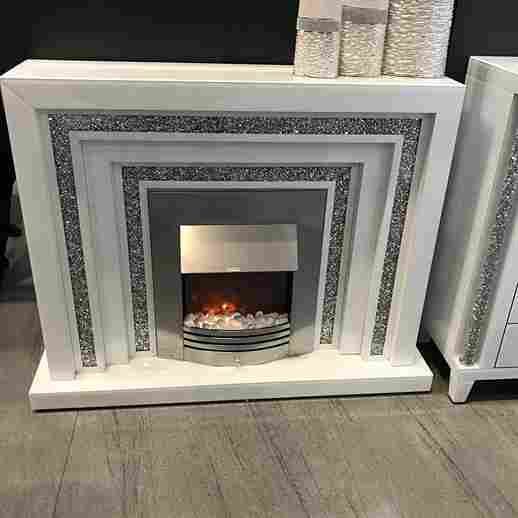How to Put Out a Chimney Fire
We Buy Fire Damaged Houses
No Obligation Free & Easy Offer
Get Cash Offer
We will get back to you as soon as possible.
Please try again later.

If you've ever had the misfortune of having a chimney fire, you know how terrifying it can be. Luckily, there are ways to prevent and put out a chimney fire before it spreads throughout your home.
Homeowners with a chimney at their house, a wood burning stove, or a fireplace should know the basics of how to properly extinguish a chimney fire and ensure that there is minimal creosote build-up in their chimney.
What should your first steps be if you are experiencing a chimney fire?
What Causes Chimney Fires?
According to the chimney safety institute, soot or creosote is the main culprit in chimney fires and fires in homes with wood stoves. Creosote is the blackish/brown residue that can be crusty or flaky, ta-like, sticky or take on a number of other appearances in your fireplace.
The chimney safety institute warns about the dangers of creosote buildup because "creosote is corrosive and can damage the flue liner over time, but the real concern is its high flammability. Because creosote is formed from unburned wood particles, all forms of creosote are highly combustible. If the temperature within the flue is right, the creosote inside could ignite and cause a chimney fire."

Get Everyone Out of Your House
First and foremost, get everyone out of your house. Close the door and windows, turn off any heating or cooling systems that are operating, and make sure your pets are safe.
Chimney fires can be incredibly dangerous because they can spread quickly. Eliminating sources of oxygen will keep larger flames at bay and help control the fire until the fire department arrives.
Eliminate Fuel Sources like Seasoned Wood
If you are safely able to be near the fire box or fireplace grate, then you should try your best to remove any fuel source, nearby combustibles, and other objects that could likely cause the fire to spread.

Any burning wood should be removed from the firebox and extinguished immediately. Additionally, make sure there are no other sources of fuel in your fireplace or near it that could potentially ignite if exposed to heat from a fire or flames coming out of your chimney.
Extinguish the Fire with Water or Other Method
If you keep a metal bucket near the fireplace or wood stove filled with water, you will want to try to extinguish a chimney fire with the water on hand. If you have a fire extinguisher on hand, like an abc fire extinguisher, you can also use this in the event of chimney fires.
If you don't have water nearby, you can also extinguish a fire with baking soda, rock salt, standard table salt, or sand.
Open the Damper
If a chimney fire has occurred and you are no longer able to extinguish it, leave the house immediately. Once you are safely outside, open the damper and allow smoke to exit through your home's flue. Do not open the damper too quickly, or else you might start another fire inside.
Call 911 if You Need the Support of the Fire Department

If you cannot control the fire, or if you're not sure how to put out a chimney fire, then call 911. If the fire is too large for you to handle yourself, or if it has spread from your chimney and is threatening other parts of your home, then it's vital to have your local fire department aid you in extinguishing the chimney fire to save your house.
Firefighters are trained professionals and their job it to put out fires. They will know how to handle the situation better than anyone.
WE CAN HELP WITH ANY SITUATION AND WE'RE READY TO GIVE YOU A FAIR CASH OFFER!
Enter Your Information Below it is Quick, Easy & Free!
Get Cash Offer
We will get back to you as soon as possible.
Please try again later.
How to Prevent Another Chimney Fire From Happening

Once you've put out a chimney fire, it's time to focus on prevention. To keep your home safe from another blaze, take these steps:
- Use your chimney cap. These caps help prevent sparks from escaping out of the chimney into your home and starting another fire. They also protect against rainwater entering the fireplace and causing damage to its structure.
- Clean your chimney at least once per year—we recommend doing this in spring before temperatures get too hot or cold again when debris has collected and built up inside of it over winter months (this is especially true if you live in a region where cold weather can linger).
- Use a fireplace screen instead of burning logs directly in front of an open doorway so that any sparks or embers won't blow back inside your house as easily when they land on solid surfaces like carpets or rugs (this applies especially if there are children present).
- Have your chimney regularly inspected by a trained professional to look for signs of structural damage, creosote buildup, other openings that can cause air to get into the fireplace or chimneys, and damage to the top lid.
- Replacing the damper when it becomes damaged or rusty.
We also recommend installing a carbon monoxide detector so that you can be alerted if there is dangerous gas in your home. Finally, regular inspections by your local fire department can help detect problems before they escalate into something worse than just a regular chimney fire!
We Buy Fire Damaged Houses
No Obligation Free & Easy Offer
Get Cash Offer
We will get back to you as soon as possible.
Please try again later.

Happy Customers



All Rights Reserved | Fire Cash Buyers
